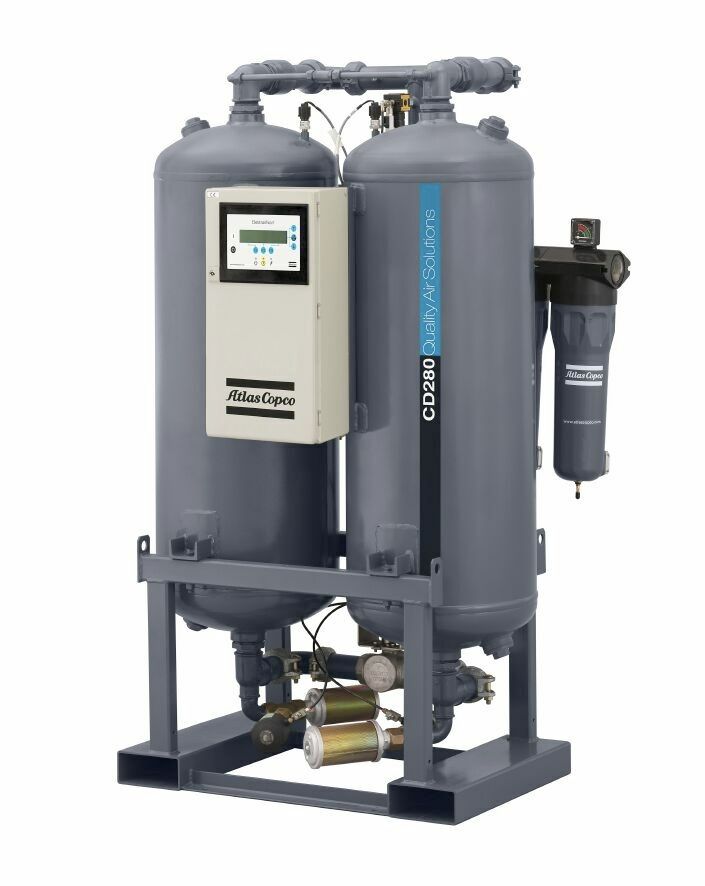Topic: Air Compressor Condensation

When designing a compressed air system, one problem is often overlooked and forgotten. This illusive problem causes corrosion, breakdown of air tools and equipment and reduces the quality of the compressed air leaving it useless. The root to all this problems is often air humidity, or water condensation to be exact.
When humid air is compressed, the airs dew point is reduced, causing water condensation to form at higher temperatures. The result of this is often the formation of water condensation. The condensations of water happens in the parts of the air system where the air pressures are at the highest and at sections where the air temperature is at its lowest.
Usually there is not much we can do to prevent condensation of water in pressurised air, but there are several ways to deal with it. This article will show you the most common methods of doing that.
Air dryers: To ensure absolutely dry compressed air, we can use an air dryer to extract all condensation from the air.
There are to principles of air drying:
- Mechanical air drying uses a machine that cools down the compressed air well below the dew point of the air. These types of dryer often uses radiators with refrigerant flowing through them to cool down the air that flows by.
- Chemical air dryer uses minerals and chemicals to extract humidity and condensation from the air. The chemicals absorb any humidity in the air, as the air flows through the chemicals. These dryer often consist of two, or more, cartridges. So that one cartridge can be used to dry the air, while the other is either being regenerated (removing humidity from the chemical) or is in standby.
Drains:
Drain valves is the absolutely easiest and most cost effective way of dealing with condensation. To get optimal effect using drain valves, all air pipes should have an incline from a drain point with a drain valve, in this way all condensation will be collected there which makes it easier to remove the condensation. Several drain points are often necessary to remove condensation throughout the compressed air system. Drain valves are also used in bottom of air tanks, pressure receivers, and like.
Membrane dryer/water trap (water filters):
These are sort of the compromise between air dryer and drains. It is important to remember that a water trap does not replace either a properly drained compressed air system, or an air dryer. The thing about water traps is that they filter out any aerosol water drops. The filter material is often made from borosilica-fibre (micro glass-fibre). As air passes through the filter water drops down to a size of 0.3 µ are filtered out by the filter and collected in the filter bowl, where it can be drained out. These filter are quite cheap and give increases the quality of you compressed air substantially.
Updated: Monday, 6 January 2014 11:20 PM EST
Post Comment | Permalink | Share This Post

